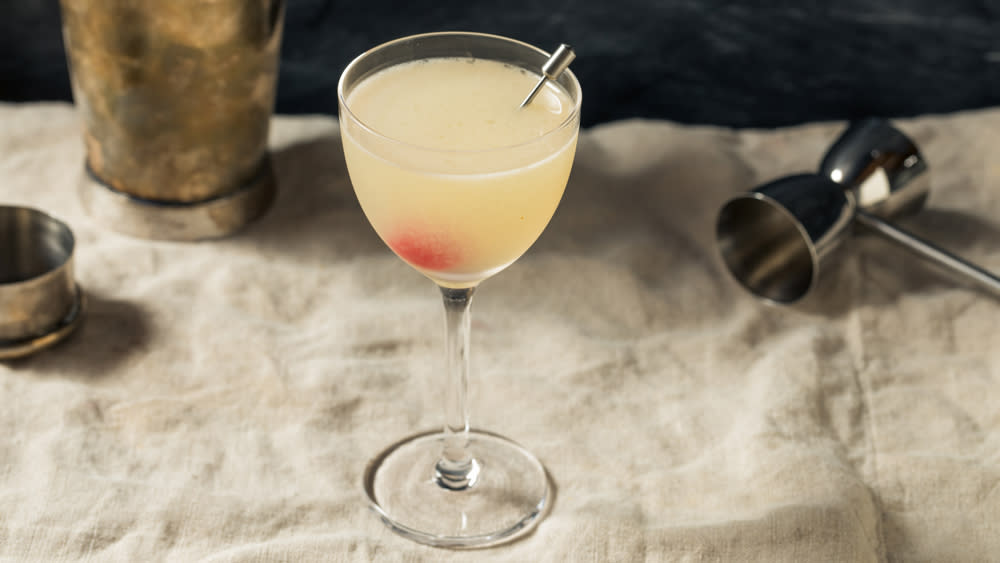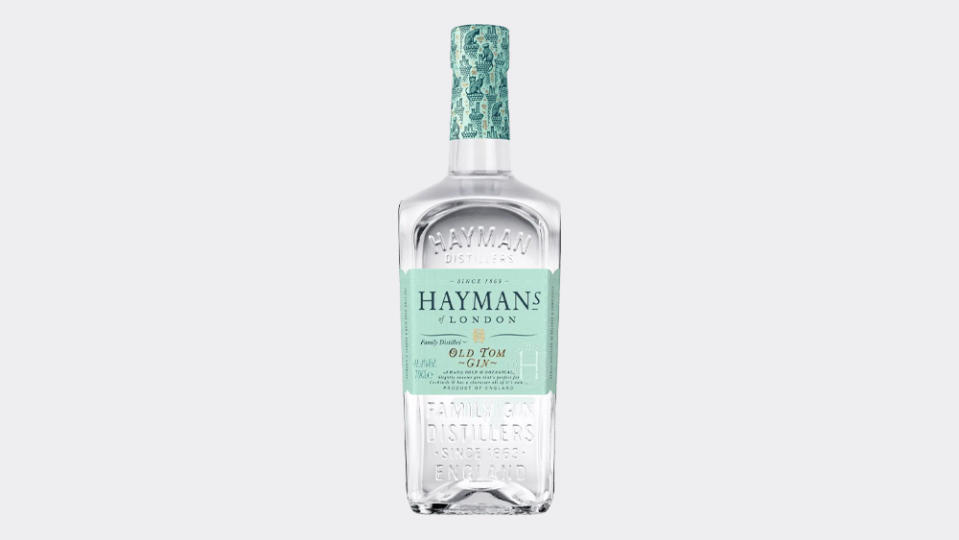How to Make a Casino, the Outstanding Cocktail With Old-Timey Gin

There are times when the usefulness of something arcane can only be illustrated by something else arcane. There are lots of examples of this: Iambic pentameter might seem irrelevant until you hear Shakespeare performed; General Relativity is likely none of your concern, but your phone’s GPS can’t work without it; and you may not be interested in Game Theory, but if you use it as a lens to view social media, you begin to understand why everyone on Twitter (sorry, X) is a monstrous sociopath.
The Casino is one of these. As far as classics go it’s fairly obscure, first appearing in 1909 in The Reminder: Up-to-Date Bartender’s Vest Pocket Guide by Jacob A. Didier. Mr. Didier’s book is broadly forgotten, and is distinctive mostly for how literally the author took his title—the book itself is a slender little volume, designed specifically to be kept in the vest pocket of a working bartender, and he goes on in the prologue to insist that “this work is essentially what it claims to be—a reminder,” explaining therefore that “all historical details have been omitted.” There’s no fluffery, just recipes, and what this means for us is that we have no idea where the Casino came from, or why it’s named what it is. We’re not even sure what kind of casino he was referring to. The word casino, derived from the Italian for house, used to mean anything from a brothel to a private dancing hall, and it was only around the turn of the century that the word was evolving to specifically refer to a gambling establishment. Of the origins, it’s impossible to know more.
More from Robb Report
How to Make a Cable Car, the Deliciously Retro Spiced-Rum Cocktail
Bacon, Egg, and Cheese Cocktail? Why Sandwich-Inspired Drinks Are Filling Up N.Y.C. Bar Menus
7 Food and Drink Pairings That Will Make You Look Like a Culinary Master
The Casino calls for lemon juice, maraschino liqueur, and orange bitters on a backbone of what Didier calls “Tom Gin,” our second in this pair of mostly forgotten artifacts of history. Old Tom Gin has a circuitous history—cocktail historians have written whole 3,000-word articles just to track down what it actually is—but for our purposes, it’s understood to be an older style of gin than the London Dry we know, fuller bodied with a richer mouthfeel, occasionally briefly aged, and to which some amount of sweetness is added. As to why anyone would want such a thing, that’s not an easy question to answer (see: the aforementioned 3,000 words), but about Old Tom Gin, we know two main facts. The first is that called for by name in many of the early recipes for drinks like the Martinez, the Ramos Gin Fizz, the Tom Collins, and of course, the Casino. The second is that once London Dry Gin came onto the scene, Old Tom Gin was largely abandoned, and it’s been a historical curiosity ever since.
So why talk about it? Because the Casino and Old Tom Gin complete each other, two dusty old relics brushed off and teamed up to make one hell of a drink. With regular gin the Casino is simply an Aviation with orange bitters instead of crème de violette and is a bit austere but plenty good, the maraschino’s fruit and earth giving depth and a long finish to the sharp zestiness of the orange bitters and piercing botanicals of the gin. But with Old Tom Gin the cocktail fills out, the small bit sweetness from the Old Tom putting flesh on the bones, and the richer body adding an almost decadent mouthfeel. It takes a good drink and makes it great, two ostensible also-rans of the cocktail canon proving each other’s worth in a single stroke. What are the odds?
Casino
1.75 oz. Old Tom Gin (or regular gin, see note below)
0.75 oz. lemon juice
0.75 oz. maraschino liqueur
2 dashes orange bitters
Add all ingredients to a cocktail shaker with ice and shake hard for eight to 10 seconds. Strain off the ice into a cocktail or coupe glass, and garnish with an orange peel and/or a maraschino cherry.
NOTES ON INGREDIENTS
Gin: I loved this with Old Tom Gin, and it might be my favorite use of the category. As for brands, you can probably find one or two. In my experience Hayman’s is the most popular, an unaged version (they’re sometimes lightly aged), and works brilliantly here, coaxing an almost tea-like complexity from the drink. Ransom is another popular bottling, though it’s proved bizarrely difficult to procure this week in my local market. Ransom is a touch aged, but I tried this with other lightly aged spirits and didn’t find the oak to be a problem, and I’m confident Ransom would make a brilliant version.
Don’t feel like buying a bottle just for this? No problem. For regular gin, I’d grab Plymouth if I had my choice, which also has a slightly round texture. Other softer, more floral gins would likely work well too. I honestly liked the classic London Drys too, but in my opinion they’re a little too pointed and acerbic, especially when compared to the others.
Lemon Juice: The original recipe calls for a mere “two dashes” of lemon juice, alongside the same measure of maraschino liqueur and orange bitters. Even using the most generous possible concept of a dash, this is practically no lemon juice at all, and if made as such, creates a cocktail that’s essentially a slightly sour gin Old Fashioned. This was troubling, at first, but a quick flip through Didier’s book shows that nearly all his citrus cocktails called for a mere two to four dashes of the lemon or lime juice. The man hated sour-style cocktails, apparently. Now firmly comfortable in his categorical wrongness, I feel better about dismissing him. I can tell you to do what Sam Ross’s Bartender’s Choice app tells us to do, and just turn it into a classic sour like the above.
Maraschino Liqueur: The one of these you’re most likely to find is Luxardo Maraschino, the tall, straw-covered bottle likely stocked at your local liquor store. If they have another, it’s the Croatian brand Maraska, which adds a brighter fruit note to Luxardo’s earthier funk and is equally excellent. This is not to discount any others, just that in my experience, these two are the ones you can find.
Orange Bitters: There’s a lot of flavor in this drink, so my typical complaint, about the lack of any single definitive go-to brand of orange bitters out there, is less cantankerous this week than it might be. Whatever brand you use, it’ll be carried through on the back of the orange peel garnish, so don’t fret too much about it. Use what you’ve got.
Best of Robb Report
Why a Heritage Turkey Is the Best Thanksgiving Bird—and How to Get One
The 10 Best Wines to Pair With Steak, From Cabernet to Malbec
Sign up for Robb Report's Newsletter. For the latest news, follow us on Facebook, Twitter, and Instagram.


